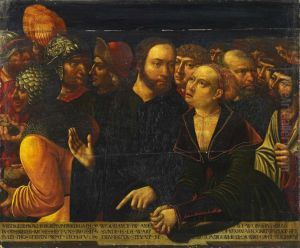Hans Kemmer Paintings
Hans Kemmer was a German Renaissance painter, primarily known for his contribution to Northern Renaissance art. Born around 1495 in Strasbourg, which was then part of the Holy Roman Empire, Kemmer was active during a period marked by significant religious, political, and cultural change. His exact date of birth is not well documented, which is common for many artists of that period.
Kemmer's work is characterized by its detailed depiction of religious scenes and portraits, a common theme in Northern Renaissance art, which often focused on devotional subjects and was heavily influenced by the spiritual climate of the time, especially the Protestant Reformation. He was likely influenced by the work of other Northern Renaissance masters such as Albrecht Dürer and Martin Schongauer.
Although not as widely known as some of his contemporaries, Kemmer's artistry reflects the typical Northern Renaissance style, which emphasized precision and a meticulous approach to detail. This can be seen in the delicate rendering of textures and the careful arrangement of his compositions. His paintings often contained symbolic elements and a deep sense of piety, which was aimed at fostering personal devotion among viewers.
Throughout his career, Kemmer worked on various commissions, which would have included altarpieces, religious panels, and portraits. His clientele was likely comprised of the local religious institutions, as well as members of the burgeoning middle class, who were increasingly able to afford and appreciate works of art.
Hans Kemmer died in 1561, having contributed to the rich tapestry of Renaissance art. His works remain as historical artifacts that offer insight into the religious and cultural life of his time. Although specific details about his life and the full scope of his oeuvre may not be as well-documented as those of some of his peers, Kemmer's legacy lives on through the pieces that have been preserved and continue to be studied by art historians and enthusiasts.
